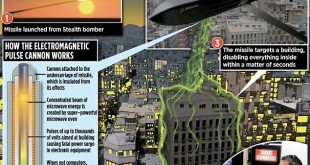While the need for convergence of cyberspace operations and electronic warfare is recognized within the Department of Defense (DoD), differences between how these two capabilities are trained, resourced, organized and employed combined with the significant functional level differences between the two have hindered efforts to converge their capabilities.
“The biggest hindrance we have right now is not a technological one, it’s an operational and policy one,” said Bertoli. “The Army traditionally likes to build systems for a specific purpose – build a radio to be a radio, build an EW system to be an EW system, but these hardware systems today have significantly more inherent capabilities.”
“Tactical EW systems and sensors provide for significant points of presence on the battlefield, and can be used for cyber situational awareness and as delivery platforms for precision cyber effects to provide a means of Electronic Counter Measures and Electronic Counter-Counter Measures, for instance,” said Col. Joseph Dupont, program manager for EW under Program Executive Office Intelligence, Electronic Warfare and Sensors.
“There is no doubt in my mind that we must provide for a more integrated approach to cyber warfare, electronic warfare and electromagnetic operations to be successful in the future conduct of unified land operations,” said Dupont.
AI is enabling many military capabilities and operations such as intelligence, surveillance, and reconnaissance, identifying targets, speed weapon development and optimization, command and control, logistics and developing war games.
AI is a dual-use technology, as it being used both to build Autonomous Cyber Defense as well as AI- based extreme cyber weapons. Artificial intelligence (AI) and machine learning can be trained to find attacks, which are similar to known attacks. Next generation Adaptive Machine Learning (ML) algorithms can collect intelligence about new threats, attacks and breaches and learn from them. AI can also automate processes for detecting attacks and reacting to breaches. In future, AI/ML can make cyber security fully automated. Militaries are developing AI-based extreme cyber weapons including intelligent viruses to penetrate enemy networks.
AI is enabling the next revolution in the military to “intelligentized warfare” in which there will be AI Versus AI, we will have to attack adversary AI systems and protect our own systems.
Project Linchpin
PEO IEW&S will use Project Linchpin to create an environment that will allow the successful deployment of AI & ML capabilities to intelligence, cyber, and electronic warfare sensor systems. The goal is to create a complete and efficient AI and ML development and operational delivery pipeline (AI/MLOPs) with supporting services for sensor programs within PEO IEW&S to provide needed capability while managing cost and risk.
Sample sensor types are Synthetic Aperture Radar (SAR), Radio Frequency (RF) spectrum,
Electronic Intelligence, Full Motion Video, 3rd Generation Forward Looking Infrared (FLIR).
Project Linchpin, is a collaboration between the Program Executive Office for Intelligence, Electronic Warfare and Sensors, or PEO IEW&S, the Army Research Lab and Army Futures Command’s AI integration hub.
Through the project, officials intend to create the “infrastructure and environment” needed to deliver AI capabilities for use across the intertwined intelligence, cyber and electronic warfare spaces. The plan, documents show, is to soothe troubles often associated with AI optimization and distribution, such as incorporation of new data and extensive training regimens.
“I see it as a huge enabler across my entire portfolio in how we can deliver the future algorithms and how we can alleviate the cognitive burden that’s been discussed,” PEO IEW&S boss Mark Kitz said Dec. 8 at the Army’s Technical Exchange Meeting 9, a networks-and-communications industry event in Nashville, Tennessee.
The cutting-edge technology can help vehicles navigate, predict when maintenance is required, assist identification and classification of targets, and aid analysts sifting through tides of incoming information. Integrating AI into weapons and networks not initially designed for it has been and will continue to be challenging, according to the Government Accountability Office, a federal watchdog, and building trust among troops will take time.
“This is really important,” Kitz said. “How do we deliver the algorithms or the software that’s going to ask questions of that data, that doesn’t overly burden the network, and delivers the answers to the questions that our analysts and soldiers are asking in a very meaningful way?”
The executive office conducted market research for the project at the conference this week. Additional engagements are planned throughout fiscal 2023. Of particular interest is input from industry regarding data holding, labeling, model training, verification and deployment, according to a request for information posted in late November.
 International Defense Security & Technology Your trusted Source for News, Research and Analysis
International Defense Security & Technology Your trusted Source for News, Research and Analysis

